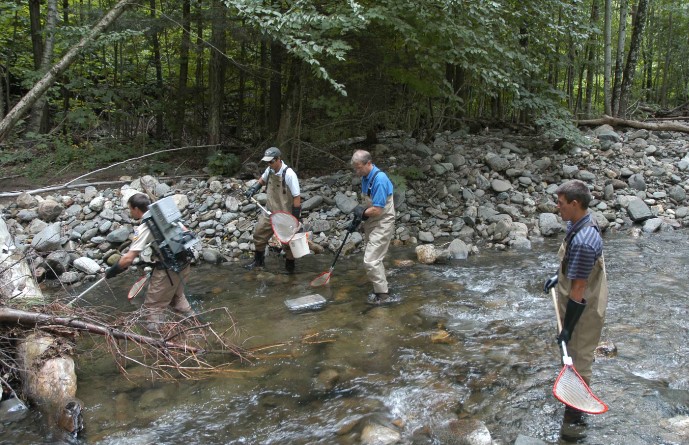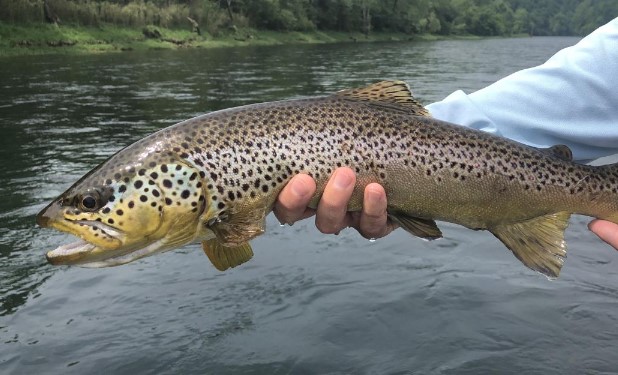Trout Tricks That Work:
Fishing for trout can be a challenging and rewarding experience. While there are many different techniques that can be effective, some trout tricks have been known to work time and time again. One of the most important things to keep in mind is that trout are often very aware of their surroundings, so it’s important to be stealthy and avoid spooking the fish.
The Mud Ball
In the Mud Ball, You have a good chance of landing a big brown or brook trout if you try this method. A stiff paste can be made by mixing some wet earth and clay together. Wrap a ball of this around a lively night crawler, or worm, that you have hooked lightly. It should be lowered silently into the pool or deep hole where the big fish lurks. Hold your rod motionless as you remain silent. Eventually, the worm emerges and wiggles as the mud is washed away by the current. A perfectly natural presentation of a perfect snack cannot be resisted by a hungry trout, suspicious or not!
The Dropping Worm or Fly
Hook the worm as shown, so that the hook won’t catch on grass or branches. Cast gently, stopping the bait above grass or branches that overhang the deep part of the pool, and letting it fall gently. Please wait. Keep your body motionless for sixty seconds. Remove the worm from the water by gently pulling it off. He’ll grab a trout if one is present! If you drop the bait directly into the water or let it drift down, it falls into the water much more naturally.
Moreover, you do not make any sudden or alarming movements and allow everything to quiet down. In this type of fishing, there’s a trick to not getting “hung up” on grass or branches. Don’t do it when the wind is gusting or when the weather is windy. Gently flick the worm off from the easiest direction by sizing up each individual lie.
Your rod tip can be gently lowered if the bait is dangling, and the worm will slide right into the water. Take up the dangling line by slowly raising the rod tip until only an inch or so is left. Nine times out of ten, a quick twitch will drop the worm into the water. The same procedure can be applied to dry flies as well-particularly divisible-and with much less chance of getting “hung up” on branches.
The Floating Branch
Take a small green branch and cut a few leaves off of it. Make sure you hook your worm or fly very lightly through a leaf, as close to the edge as possible. You can’t cast under the overhanging bushes, so let the branch and lure float downstream. When you twist the hook free from the leaf, your worm will sink naturally where a hungry trout will find it. Short jerks and pauses are ideal if you’re using a fly, and this can get you many a rise! Your lure can also be placed under low-hanging branches where it cannot be reached any other way.
Worm Tipped Fly
In a Worm Tipped Fly, you can try a very tiny wet fly on which you have hooked the end of a small worm’s tail when trout are rising and not taking your wet or dry flies. There is only a small piece, not more than an eighth or quarter inch long. Retrieve it on the surface, or at least just beneath it, as usual. If you are fishing a run, or a slow-moving pool, cast upstream and let the lure drift downstream. Always keep your line slack, and be ready to strike at the first sign of movement.
Reversed Minnow Trick
Try this reversed minnow trick when all other baits fail to catch big browns, brook trout, Dolly Vardens, cutthroats, rainbows, steelheads, and landlocked salmon. Details can be found in the drawing. Put an eighth to half-ounce sinker on the leader three to four feet up the leader when your minnow is properly “sewed on” using this method.
Once there is a pool, a large rock, or a bunch of stones nearby, you can manipulate your lure and sinker into it. Sinkers should be allowed to sink to the bottom. For some reason, the current stirs up the big fish into an irresistible desire to grab your lure as the minnow waves from side to side, without spinning. I’ve been amazed at the number of lakers, squaretails, and landlocks I’ve caught using this method after trying it on Western streams with great success.
Leaping Line Trick
Stand still in one position on a windy day and let the wind carry your fly. “Dap” and skip it wherever you can. Let the wind carry your fly to cover a complete group of imaginary semi-circles, A, B, C, etc. Let the wind carry the fly to 1, then lower the rod tip and drop the fly into the water. If you tighten the line, the wind will lift the fly from the water. After that, lower the tip and the fly will strike the water at 2. As far as the wind will allow, let it hit the water again at 3.
Keeping it “dapping” on the surface, you can work it back towards you a foot or so to the left, until you have covered all the water in front of you. When no other method seems to work on a windy day, this method often produces fish. By slacking the line, allowing the fly to drop to the surface, and gradually tightening the line, the fly can skid and slide and skip along the surface. A day with a lot of wind is also a great day for getting rises. Read More – Social Benefits of Fishing







